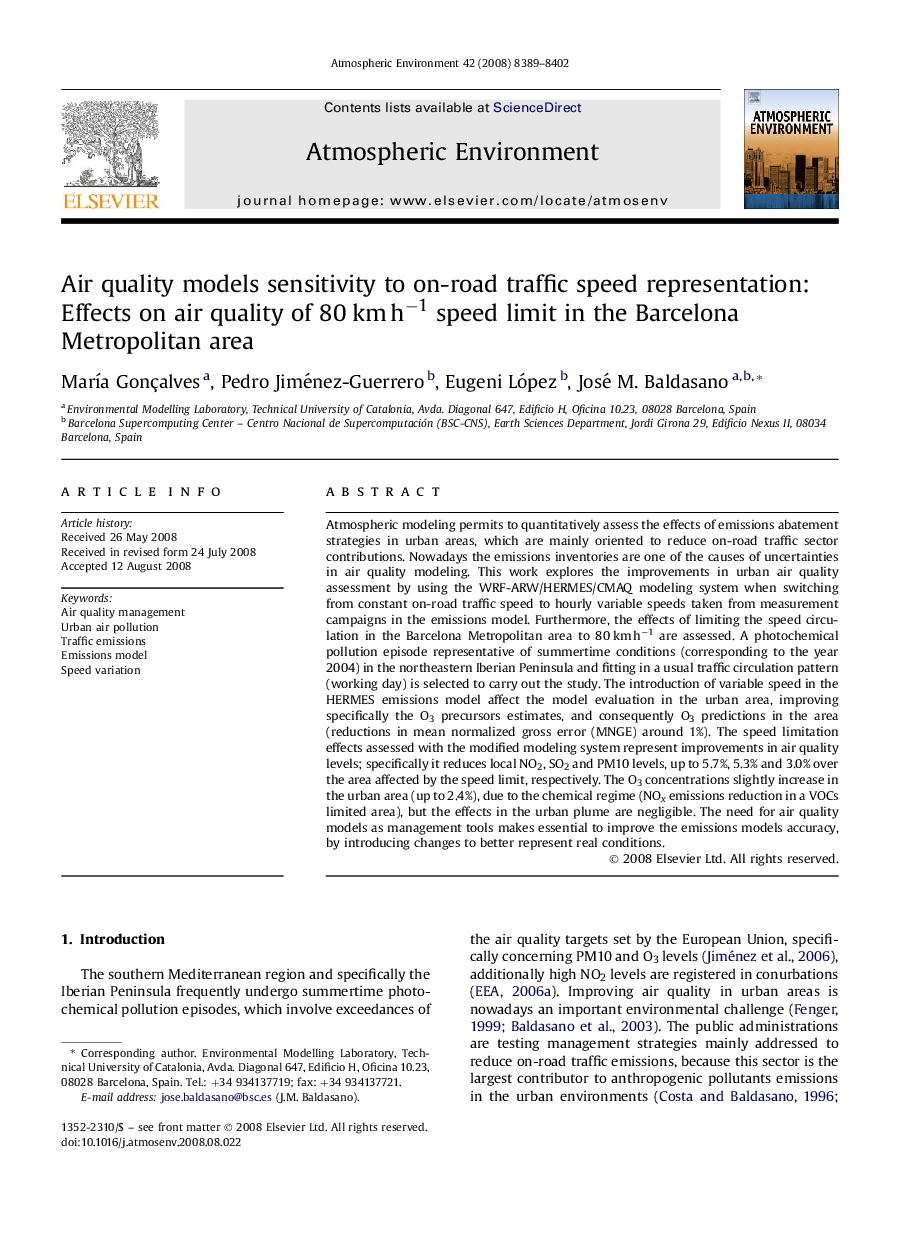| Article ID | Journal | Published Year | Pages | File Type |
|---|---|---|---|---|
| 4442522 | Atmospheric Environment | 2008 | 14 Pages |
Atmospheric modeling permits to quantitatively assess the effects of emissions abatement strategies in urban areas, which are mainly oriented to reduce on-road traffic sector contributions. Nowadays the emissions inventories are one of the causes of uncertainties in air quality modeling. This work explores the improvements in urban air quality assessment by using the WRF-ARW/HERMES/CMAQ modeling system when switching from constant on-road traffic speed to hourly variable speeds taken from measurement campaigns in the emissions model. Furthermore, the effects of limiting the speed circulation in the Barcelona Metropolitan area to 80 km h−1 are assessed. A photochemical pollution episode representative of summertime conditions (corresponding to the year 2004) in the northeastern Iberian Peninsula and fitting in a usual traffic circulation pattern (working day) is selected to carry out the study. The introduction of variable speed in the HERMES emissions model affect the model evaluation in the urban area, improving specifically the O3 precursors estimates, and consequently O3 predictions in the area (reductions in mean normalized gross error (MNGE) around 1%). The speed limitation effects assessed with the modified modeling system represent improvements in air quality levels; specifically it reduces local NO2, SO2 and PM10 levels, up to 5.7%, 5.3% and 3.0% over the area affected by the speed limit, respectively. The O3 concentrations slightly increase in the urban area (up to 2.4%), due to the chemical regime (NOx emissions reduction in a VOCs limited area), but the effects in the urban plume are negligible. The need for air quality models as management tools makes essential to improve the emissions models accuracy, by introducing changes to better represent real conditions.
